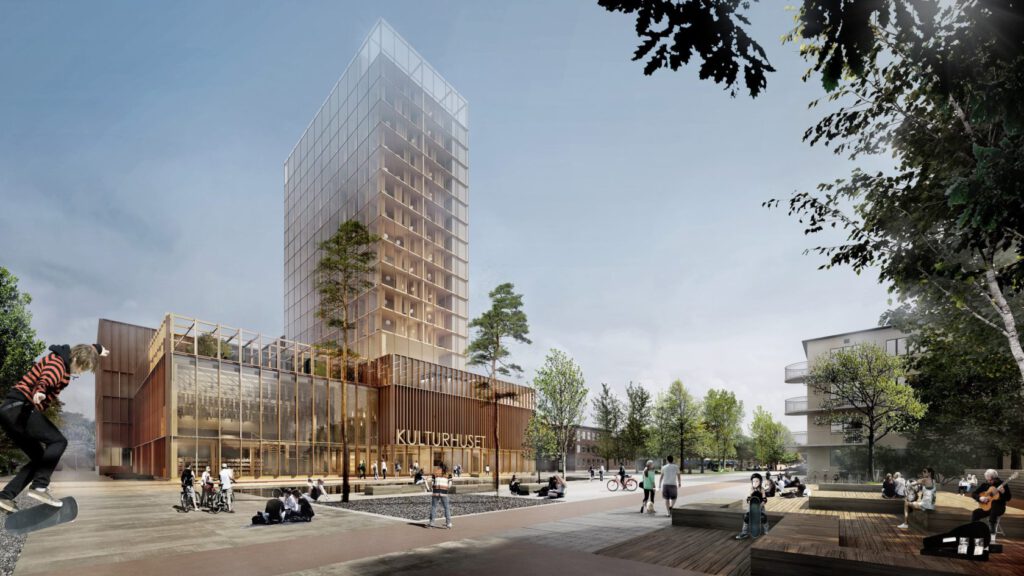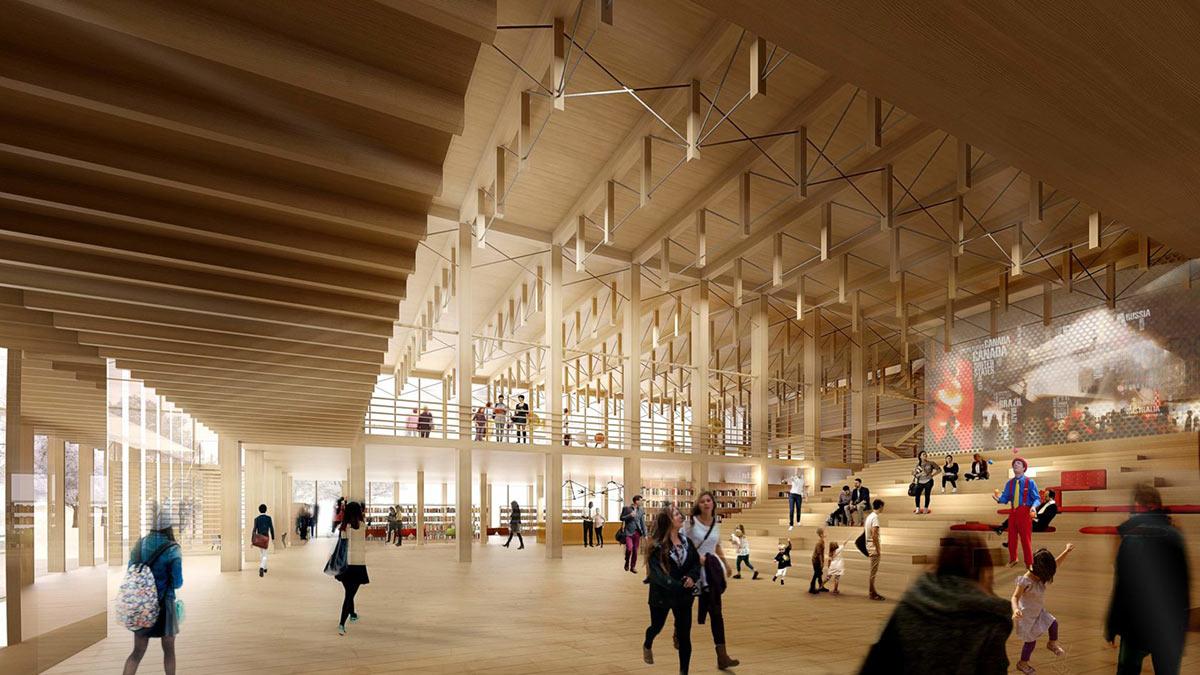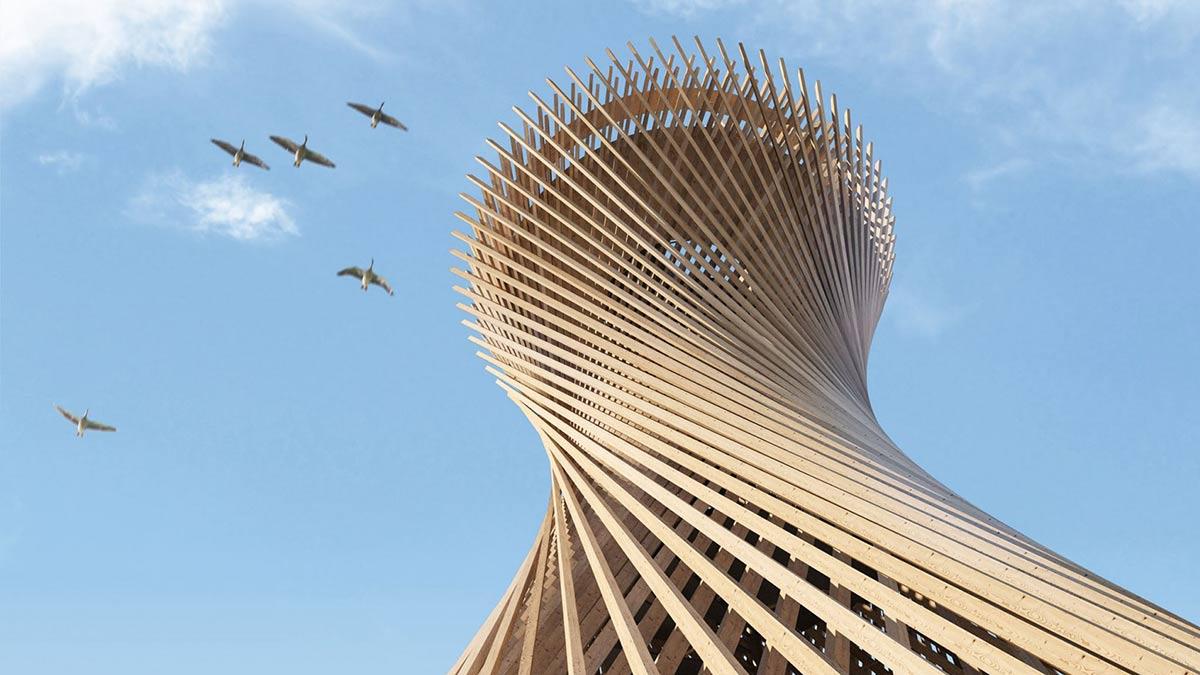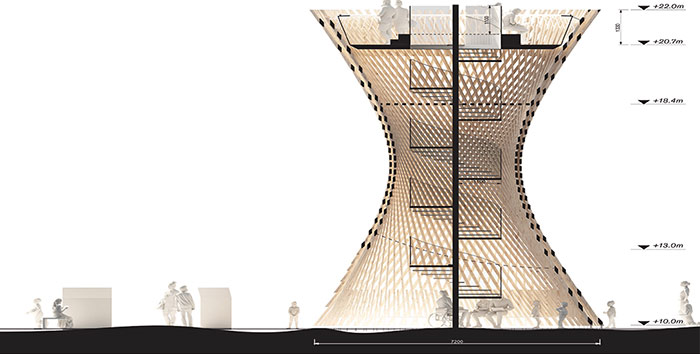Digital and climate neutral
Their pioneering timber high-rise gained international recognition for the architects at White Arkitekter. Researcher and architect Jonas Runberger explains why computational design processes are so important for reaching climate goals.
The escalating consumption of resources by humans and the emission of greenhouse gases have led to a climate crisis. In response, architects, engineers, property developers, politicians and scientists are working to at least mitigate the consequences. But new technologies need to be developed and decisive action is required in order to achieve this. According to Jonas Runberger from Swedish architecture firm White Arkitekter, the extensive digitalization of design can currently make a huge contribution here.
Climate-neutral architecture
As one of the leading architecture offices in Scandinavia, in recent years White Arkitekter has pressed ahead with constructional timber design, and has had significant results. Their Sara Kulturhus in Sweden’s Skellefteå is one of the tallest high-rise structures made of wood. It won them the International Award for Wood Architecture in 2022 and it is currently nominated for the Mies van der Rohe Awards 2024.
Runberger runs the digitalization practice “Digital Matter”, which has played a major role at White Arkitekter for years. The company has set itself the goal of making its entire architecture climate neutral by 2030, and plans to achieve this by further developing its digital design competence.
70 percent of the UN Sustainable Development Goals can be achieved through increased digitalization.
Jonas Runberger, Head of Computational Design at White Arkitekter
The architect and researcher sees this as an important tool for the future. He is convinced that “70 percent of the UN Sustainable Development Goals can be achieved through increased digitalization”, and continues: “The broad application of computational design gives us a good chance of succeeding. This is not a vision of the future, but a way of working that can be implemented immediately.”
Parametrically designed tower
Using the example of the timber observation tower in Varberg, which was built on the Swedish peninsula Getterön, Runberger explains the advantages of parametric design. The structure is based on a large number of beams twisting around an axis. It is the special geometry of the design that ensures the tower’s stability. As “a very advanced balancing act”, it is likely that this would not be possible in a linear creative process.
The shape of the new landmark is inspired by a sheaf, or a bundle of grain, which is a structure found in great numbers in Sweden’s fields. “Without computational design it wouldn’t just have been more difficult to test alternative concepts – it would have been very time consuming,” says Runberger. And it’s no secret that more time means higher costs. “Computational design is on the way to ensuring that more sustainable and innovative concepts can be implemented,” he concludes.
Innovation that cuts costs
Cost certainty is a key factor in the success of real estate projects. “We do not need to start from scratch if the conditions in a project are changed at late stages, we can simply adjust the parameters,” the architect and researcher explains. In several cases, sustainable ideas and computational design were able to not just keep a project within its budget, but also cut costs.
Computational design speeds up the transformation to a more sustainable society.
Jonas Runberger, Head of Computational Design at White Arkitekter
One example here is the residential project Årstafältet in Stockholm. Instead of moving huge amounts of soil to a site far away, the architects used it to create small hills instead. The shape of these mounds was designed according to certain parameters. And reusing the excavated earth ultimately does more than just reduce the costs and carbon emissions for transportation. The hills around this residential building also act as a noise barrier. Furthermore, they serve as a place where residents can get outside and explore.
Many different forms
Digital design processes are changing the way in which architects work. When it comes to generative design, the focus is no longer on the creation of one single architectural form. It is rather about finding a process that can generate many forms. From here, the architect selects the shape that performs better than the others.
Runberger is convinced: “Computational design speeds up the transformation to a more sustainable society.” The processes enable increased architectural innovation and allow the effects of different resource-efficient solutions to be measured and quantified. “They help us put the right materials in the right place, and minimize the climate impact.”
Text: Gertraud Gerst
Translation: Rosemary Bridger-Lippe
Visualizations: White Arkitekter



